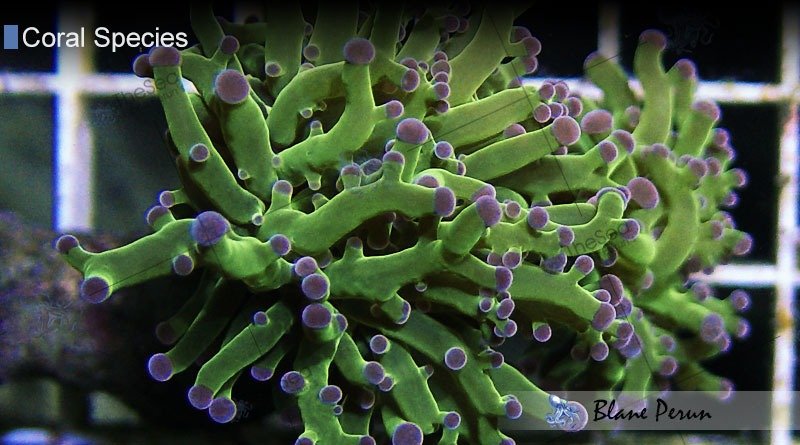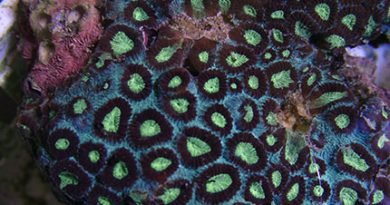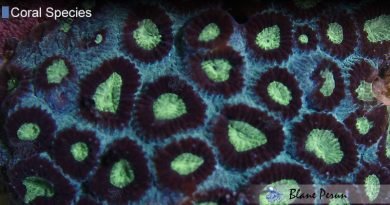Euphyllia
Table of Contents
Euphyllia is a genus of stony corals that comprises a number of different species and sub-species, all of them characterized by having large polyps.
Euphyllia comprises several species, the ones below being the most important:
- Paraancora – also known as the branching hammer coral, this species is wide-spread in the Indo-Pacific area. These types derive their characteristic appearance from the large tentacles with a knob at the end, but they present large variations in terms of coloring – they come in all shades of brown, but fluorescent colors are not uncommon either;
- Divisa – found mainly in the reefs around Australia, Fiji, in the East China Sea and in Sotheast Asiaas well as around Palau, these corals feature long tentacles that extend into smaller branches with a rounded, knob-like tip. The tentacles are usually green, with light-colored endings;
- Paradivisa – common around American Samoa and the Indo-Pacific, too, these corals are often referred to as frogspawn coral. These corals have very long tentacles that end in not one, but multiple branches, usually of the same color as the tentacle itself;
- Glabrescens – also known as torch coral, this species is common in the Gulf of Aden, in the Iranian Gulf, in the Southwest of the Pacific, around Australia and in the East China Sea. Not nearly as spectacular as the other Euphyllia species, torch corals are usually brown or green, with a cream-colored knob at the end of the tentacle;
- Paraglabrescens – a very rare and special species, found in the East China Sea, Papua New Guinea as well as around the Phillippines. They resemble E. glabrescens in every way, with only two minor differences: the tentacles are green or grey and they are shorter;
- Cristata – found in the Andaman Sea, in certain reefs around East Africa and Southern Asia as well as in the West Pacific, they have shorter tentacles. In terms of coloring, they range from almost clear to green and grey, with tips colored differently;
All species belonging to the genus proliferate quickly and they can form large colonies over very short periods of time. When left in their natural habitat, they reproduce by releasing eggs and sperm, but they might choose to proliferate asexually, by means of budding, that is, the production of small, new polyps that grow from the base of the colony. They prefer low to moderate water flow, strong enough to keep the tentacles in movement and they thrive well in clear waters as well as in dimmer, more turbid ones.
These species are about the only types of corals that have stinging cells, which they use for protecting themselves. Luckily, the stinging tentacles differ from the others by their length, so they can be avoided easily. In strong currents, Euphyllia tend to develop sweeper tentacles that will become eventually separated by the flow and will travel to a location where they can start a new colony.
Unveiling the Secrets of Euphyllia Corals: A Deep Dive into Their World
Euphyllia corals, a captivating and diverse group within the marine ecosystem, play a pivotal role in the health and beauty of coral reefs. These corals, known for their distinct tentacles and vibrant colors, are not just a visual marvel but also key contributors to reef biodiversity. This article aims to explore various facets of Euphyllia corals, from their intricate biology to their care in marine aquariums, offering insights that appeal to both the general public and enthusiasts with a keen interest in marine life.
Understanding Euphyllia Coral Biology
The Anatomical Structure of Euphyllia
Euphyllia corals, scientifically referred to as species within the genus Euphyllia, exhibit a fascinating anatomical structure. These large-polyped stony corals (LPS) are renowned for their long, flowing tentacles and calcareous skeletons, which provide a sturdy foundation for reef structures. Each individual polyp, a living unit within the coral, is equipped with nematocysts – specialized cells used for feeding and defense. These cells enable Euphyllia to capture plankton and other small organisms, sustaining their nutritional needs.
Reproduction and Growth Patterns
Euphyllia corals reproduce both sexually and asexually, contributing to their resilience and diversity. In sexual reproduction, they release gametes into the water column, a process known as broadcast spawning. This event is typically synchronized with lunar cycles, ensuring the simultaneous release of gametes for fertilization. Asexual reproduction occurs through fragmentation, where pieces of the coral break off and form new colonies. This ability to propagate easily makes Euphyllia a popular choice among reef aquarium enthusiasts.
Euphyllia in Marine Aquariums
Ideal Tank Conditions for Euphyllia
Maintaining Euphyllia in marine aquariums requires specific water conditions to mimic their natural habitat. The ideal tank should have a stable temperature between 75-82°F, with a pH level ranging from 8.1 to 8.4. Salinity should be maintained at 1.023 to 1.025 specific gravity. Proper lighting and moderate water flow are crucial for their photosynthetic needs and overall health. Regular water testing is recommended to ensure these parameters remain within the ideal range.
Common Challenges in Euphyllia Care
One of the main challenges in caring for Euphyllia corals is avoiding stress and disease. They are susceptible to brown jelly disease, a bacterial infection that can rapidly deteriorate the coral’s health. Overcrowding and poor water quality can also stress these corals, leading to bleaching and reduced growth. Providing ample space, consistent water quality, and monitoring for signs of distress are key to successful Euphyllia care in home aquariums.
Euphyllia Species Spotlight
Hammer Coral (Euphyllia ancora)
The Hammer Coral, Euphyllia ancora, is a popular species known for its hammer- or anchor-shaped tentacles. This coral is favored for its dynamic movement and vibrant colors, ranging from green to purple. It requires moderate lighting and water flow, making it a suitable choice for intermediate aquarists. The Hammer Coral is also a hardy species, capable of withstanding minor fluctuations in water parameters.
Frogspawn Coral (Euphyllia divisa)
Euphyllia divisa, commonly known as Frogspawn Coral, is distinguished by its polyps that resemble a mass of frog eggs. This species is admired for its unique appearance and fluorescent colors. Frogspawn Coral thrives under moderate to high lighting and requires similar water conditions to other Euphyllia species. It is relatively easy to care for but should be given space to expand without competing with neighboring corals.
Euphyllia’s Role in Reef Ecosystems
Ecosystem Contributions of Euphyllia Corals
Euphyllia corals contribute significantly to reef ecosystems by providing shelter and habitat for various marine species. Their intricate structures offer refuge for small fish and invertebrates, enhancing biodiversity. Additionally, Euphyllia corals play a role in calcium carbonate production, crucial for reef building and maintenance. Understanding their ecological role is essential for conservation efforts and the sustainability of reef environments.
Interaction with Other Reef Inhabitants
Euphyllia corals interact with a myriad of reef inhabitants, forming symbiotic and competitive relationships. The symbiosis with zooxanthellae, microscopic algae, is vital for their survival, as these algae provide nutrients through photosynthesis. However, Euphyllia can also engage in competitive behavior, using their stinging tentacles to fend off encroaching corals or predators. These interactions highlight the dynamic nature of reef ecosystems and the importance of Euphyllia within them.
FAQs about Euphyllia Corals
1. What are the ideal water parameters for keeping Euphyllia corals healthy? Euphyllia corals thrive in water with a stable temperature of 75-82°F, a pH level between 8.1 and 8.4, and a specific gravity of 1.023 to 1.025. Consistent water quality, moderate lighting, and water flow are also crucial for their well-being.
2. How do Euphyllia corals contribute to reef ecosystems? Euphyllia corals play a pivotal role in reef ecosystems by providing shelter for various marine species and contributing to biodiversity. Their calcium carbonate skeletons are integral to reef building and maintenance, showcasing their ecological importance.
3. Can Euphyllia corals be propagated in home aquariums? Yes, Euphyllia corals can be propagated in home aquariums through fragmentation. Carefully breaking a piece of the coral and allowing it to attach to a rock or substrate can lead to the formation of a new colony, making them a popular choice among aquarists.
4. What are some common issues faced when caring for Euphyllia corals? Common issues in Euphyllia care include susceptibility to brown jelly disease, stress from overcrowding or poor water quality, and competition with other corals. Monitoring for signs of distress and maintaining optimal tank conditions are key to mitigating these issues.
5. What distinguishes Hammer Coral and Frogspawn Coral within the Euphyllia genus? Hammer Coral (Euphyllia ancora) is known for its hammer-shaped tentacles and vibrant colors, while Frogspawn Coral (Euphyllia divisa) resembles a mass of frog eggs with its unique polyp structure. Both species require similar water conditions but differ in appearance and tentacle shape.




